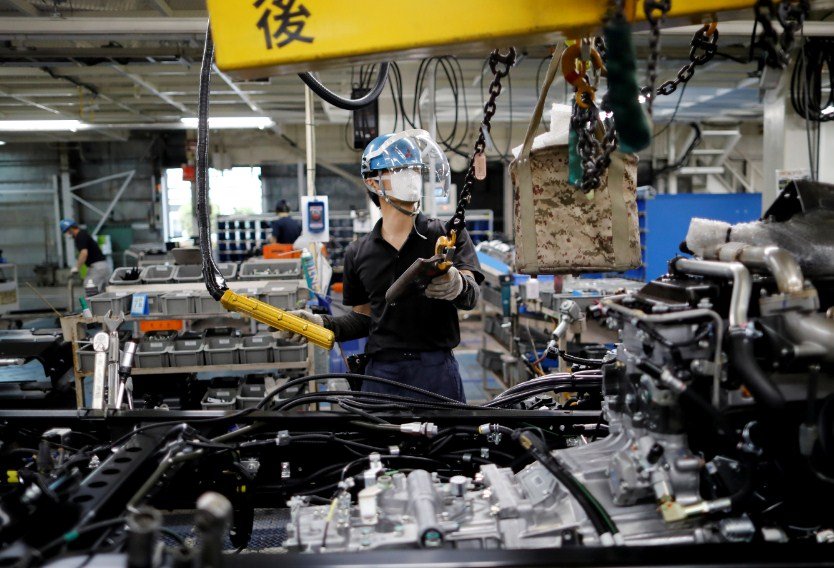Japan’s business confidence has improved significantly in the July-September quarter, reaching the highest level since late 2021, according to the latest Bank of Japan (BOJ) tankan survey. The survey, which measures the mood of large manufacturers and non-manufacturers, showed that both sectors were optimistic about the economic outlook, as global demand and domestic consumption picked up after the Covid-19 pandemic.
BOJ tankan survey reveals upbeat business sentiment
The BOJ tankan survey, which was released on Monday, showed that the headline index for large manufacturers’ sentiment rose to plus 13 in September, up from plus 5 in June, and exceeding the median market forecast of plus 10. This was the highest level since December 2021, when the index stood at plus 14.
The survey also showed that the index for large non-manufacturers’ sentiment increased to plus 18 in September, up from plus 14 in June, and matching the median market forecast. This was the highest level since September 2021, when the index was at plus 21.
The improvement in business confidence was driven by a recovery in global demand, especially from China and the United States, as well as a rebound in domestic consumption, as Japan eased Covid-19 restrictions and accelerated its vaccination program. The survey also indicated that firms were facing less pressure from supply chain disruptions and rising raw material costs, which had weighed on their profits in previous quarters.
Japan’s economy expected to grow in the third quarter
The BOJ tankan survey also showed that large firms plan to increase their capital expenditure by 9.6% in the current fiscal year ending in March 2022, up from 7.7% in the previous survey. This suggests that firms are confident about the sustainability of the economic recovery, and are willing to invest in new equipment and facilities.
The positive tankan results are in line with other indicators that point to a strong growth in Japan’s economy in the third quarter, after it contracted by 0.9% in the second quarter due to the Covid-19 state of emergency. According to the Cabinet Office, Japan’s core machinery orders, a leading indicator of capital spending, rose by 0.9% in July, beating market expectations. The office also revised up its assessment of machinery orders, saying that they were “picking up”.
The BOJ is expected to revise up its economic projections for the current fiscal year at its next policy meeting on October 28-29, when it will also release its quarterly outlook report. The central bank currently expects the economy to grow by 3.8% in fiscal 2021, and by 2.7% in fiscal 2022.
BOJ faces dilemma over monetary policy amid inflation uncertainty
The BOJ tankan survey also showed that firms expect consumer prices to rise by 1.4% a year from now, 1.2% three years from now, and 1.1% five years from now. These inflation expectations are well below the BOJ’s 2% target, and suggest that firms are not convinced that the economic recovery will generate enough inflationary pressure.
The BOJ has maintained an ultra-easy monetary policy stance since 2013, aiming to achieve its elusive 2% inflation target. The central bank has kept its short-term interest rate at minus 0.1%, and has pledged to guide long-term interest rates around zero percent, through its yield curve control (YCC) framework. The BOJ has also been buying massive amounts of government bonds and other assets, to pump liquidity into the economy and support market stability.
However, the BOJ faces a dilemma over how to balance its monetary policy amid the uncertainty over the inflation outlook. On one hand, the BOJ may need to maintain its stimulus for longer, as inflation remains subdued and the Covid-19 pandemic poses downside risks to the economy. On the other hand, the BOJ may need to consider tapering its stimulus, as the economy recovers and the side effects of its policy, such as the erosion of bank profits and the distortion of market functions, become more apparent.
The BOJ has signaled that it is in no hurry to change its policy direction, and that it will continue to support the economy until it achieves its inflation goal. However, some analysts expect the BOJ to gradually adjust its policy framework, by allowing more flexibility in its bond purchases and interest rate guidance, and by introducing more measures to mitigate the adverse effects of its policy on the financial sector.

